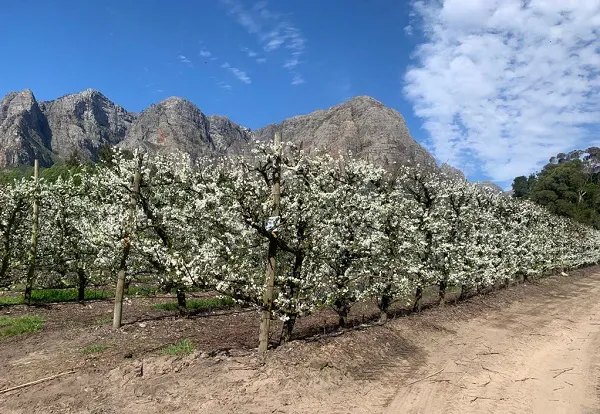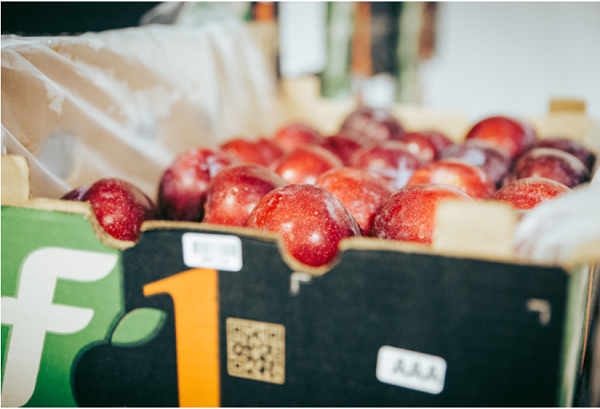A springtime that was warmer than usual, with heat and sunshine coming on sooner, has had a number of pleasing side-effects in the stonefruit orchards of the Western Cape.
As a consequence, the stonefruit export estimate is higher than last year across all categories: the expected plum crop of 86,000 tonnes is 4% higher than last year with a 15% rise in nectarine exports (23,650 tonnes).
The peach crop estimate is 6,550 tonnes (a 4% increase) and on apricots, Hortgro reckons the export crop could be up by 9% to reach 3,085 tonnes, happy news for apricot lovers after a few lean years.This is the first week in which they are packing all four stonefruit categories, says Charl Stander, technical manager at Franschhoek-based Freshness First (right), and the crop is looking exceptional as result of the warm and dry springtime.
African Rose, Suplum 41 and Suplum 25 plums are currently harvested. From here on, plum volumes will build up strongly and their first sea freight plums are now loaded.
Charl notes that a number of people have already told him this season that the early stonefruit are unexpectedly sweet: usually early stonefruit tend to be too sour for the South African palate, but this year the warm springtime has been a boon to sugar development, and on all stonefruit.
“It’s a result of climate: the warm spring we’ve had, bringing earlier heat and sunshine,” he says. Apricot cultivars now harvested are Imperial and Charisma and a little old Supergold which is being phased out (actually a canning apricot).
He has just been in some of their producers’ Carmingo apricot orchards, where fruit set has been very good. These late-summer blush apricots are for the moment still completely green. They have, despite their long history in France, been planted in South Africa only over recent years; the high chilling requirement rules out most production areas.
Lack of veld flowers sent wild pollinators into orchards
Moreover, winter rains came late which delayed the flowering of wild flowers and vygies, Charl says, and scores of wild bees and other pollinators foraged in the plum orchards, resulting in exceptional fruit set.
“Even blocks that didn’t have any fruit during the drought, are now covered with fruit. It just goes to show the dominance of nature,” he remarks.

Growers are now aggressively thinning out and he expects bigger fruit than last year.
Recent hail storms
Blocks under net are opened to allow entrance for pollinators, and this season is showing why nets have become a sine qua non in fruit farming.
“We’ve already had two rounds of hail this season, it’s very strange,” he says, “and there have been thunderstorms – we’re not used to thunder around here.”
The effect of localized hail - last week over the Koo Valley beyond Montagu and in the Witzenberg, the week before that over the Hex River Valley and Robertson – will be negligible, he reckons.
Winter rainfall was significantly less, but the dams are sufficiently full to carry them through summer.
No margin for quality errors
The markets in Europe have more from the European harvest still on the market than they’d initially expected, but, on the other hand, a lower price could stimulate sales.

Purchasing power is poor and in this respect, he remarks, South African and European consumers are in the same boat.
“I tell producers: you have to farm in a manner that every fruit can be exported, with no waste and no claims. There is no margin for error anymore. Quality is one of the few things over which we have control while we are cornered by rising costs.”
High fertilizer costs (although it’s come down a bit recently) incentivize producers to shop around and to use more organic fertilisers.
As for spraying, their producers have over the past few years moved away from fixed spraying programmes, to rather spray as needed and in this way, reduce the amount of chemical use.
